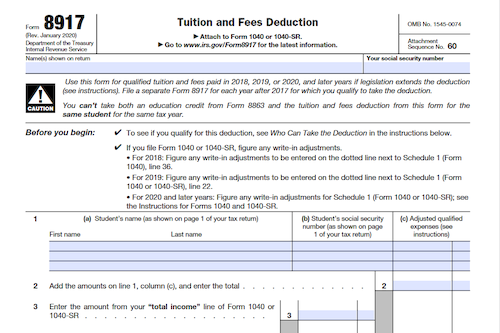Form 1099-K is an IRS form that taxpayers receive to report certain payment transactions from payment card and/or third-party network transactions above a threshold. If a taxpayer is self-employed or an independent contractor, they must report 1099-K income on their federal Form 1040 tax return.
What is Form 1099-K?
Form 1099-K is a form from the Internal Revenue Service (IRS) that taxpayers receive to report income from payment card transactions (such as debit or credit cards) and/or third-party network transactions (such as PayPal, Venmo, or Zelle) above a certain threshold in the prior calendar year. This income is reported on a Schedule C of the Form 1040. It is critical to ensure the business income reported is consistent with what is reported on the 1099-K form, so backup documentation is key. Additionally, if there is any incorrect information such the payee taxpayer identification number, the gross amount or number of transactions, or any other thing, taxpayers must contact their payment settlement entity to request a corrected form and retain a copy their own.
IRS Form 1099-K – Who Needs to Fill It Out?
Form 1099-K is the IRS form used to report certain payment transactions for independent contractors and the self-employed. If you receive payments from payment card and/or third-party network transactions totalling more than $20,000 and more than 200 transactions (or over $600 and no transaction threshold for 2022 and beyond) during the previous year, you should expect to receive Form 1099-K by Jan. 31. Multiple conditions may require special action so it’s important to thoroughly review the form for accuracy – verifying your taxpayer identification number, identity and total payments – and to make sure your business income reported on your tax return correlates with the form. If you have any questions, contact your payment settlement entity and/or consult a tax preparer.
Step-by-Step: Form 1099-K Instructions For Filling Out the Document
Filling out a Form 1099-K is an important part of reporting self-employment income. This IRS form provides information relevant to certain payment transactions associated with payment card transactions and third-party network transactions that surpass a certain threshold in a given year. Generally, Form 1099-K should be reported on Schedule C as you compile your tax return. If you are self-employed or an independent contractor, always double-check that the details you are reporting are accurate and that the amounts and Social Security numbers correspond. Additionally, consider information such as merchant category codes, cash equivalents, discount amounts, fees, and refunded amounts when looking at your records. Finally, if you used the same credit card terminal in two different businesses over the course of the year, your 1099-K will include payments from both businesses; similarly, be aware that your form may include transactions from before or after you sold your business. Keep detailed records and ensure form accuracy to avoid any issues.
Below, we present a table that will help you understand how to fill out Form 1099-K.
| Key Points | Details |
|---|---|
| Filing Requirement | An important part of reporting self-employment income. |
| Form Purpose | Provides information on payment card transactions and third-party network transactions exceeding a certain threshold. |
| Reporting Location | Generally reported on Schedule C when compiling your tax return. |
| Accuracy Check | Always double-check reported details, including amounts and Social Security numbers. |
| Additional Considerations | Take into account merchant category codes, cash equivalents, discounts, fees, and refunded amounts when reviewing your records. |
| Multiple Businesses | If you used the same credit card terminal in multiple businesses during the year, your 1099-K will include payments from both businesses. |
| Transaction Timeline | Your form may include transactions from before or after you sold your business. |
| Record Keeping | Keep detailed records to ensure form accuracy and avoid issues. |
Do You Need to File Form 1099-K Each Year?
Do You Need to File Form 1099-K Each Year? Yes, if you are a self-employed individual or an independent contractor who received payment from any payment card transactions or third-party network transactions above a certain monetary threshold, you must file Form 1099-K each year. For the 2021 tax year, this includes any payments over $20,000 and more than 200 transactions, while for 2022 and beyond, this covers payments over $600 with no transaction threshold. To avoid potential issues, check your payment card receipt records and merchant statements, take special action if there is an error on the form, and make sure you acquire backup documentation. It is also important to note that the form may include payments for transactions made before or after you purchased or sold your business.
Download the official IRS Form 1099-K PDF
On the official IRS website, you will find a link to download Form 1099-K: Payment Card and Third-Party Network Transactions. However, to make it easier for you, we are providing the link in our article, which comes directly from the official irs.gov website! Click to download: Form 1099-K
Sources:
https://www.irs.gov/forms-pubs/about-form-1099-k
https://www.irs.gov/instructions/i1099k




